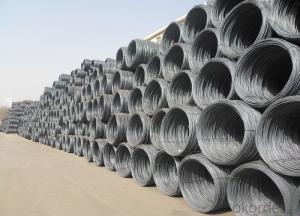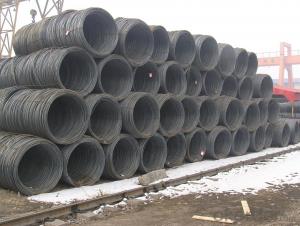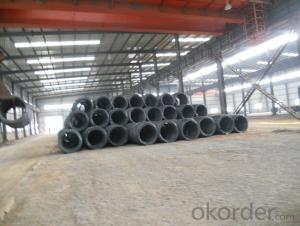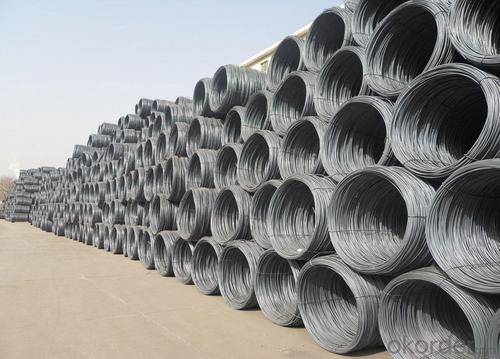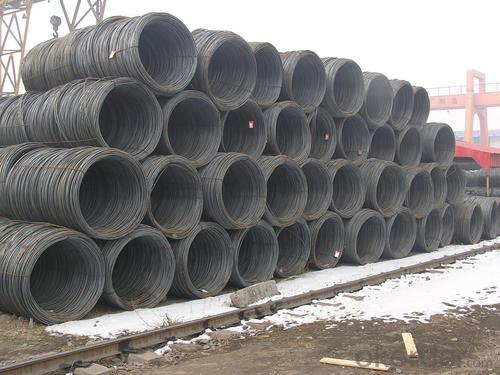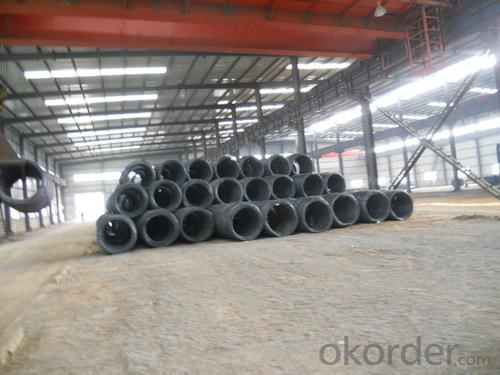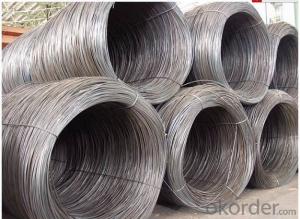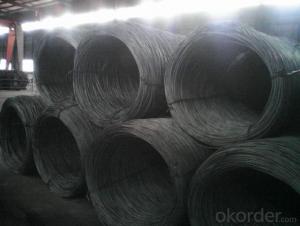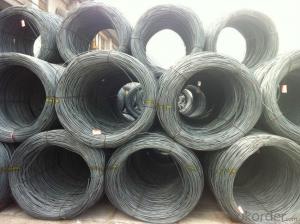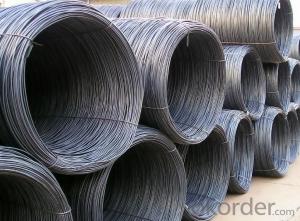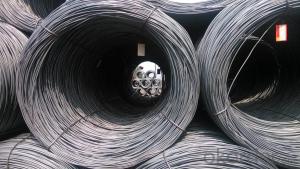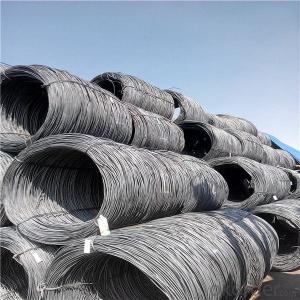Low Carbon Hot Rolled Steel Wire Rod in Coil
- Loading Port:
- China main port
- Payment Terms:
- TT OR LC
- Min Order Qty:
- 100 m.t.
- Supply Capability:
- 10000 m.t./month
OKorder Service Pledge
OKorder Financial Service
You Might Also Like
Specification
Product Description:
OKorder is offering Low Carbon Hot Rolled Steel Wire Rod in Coil at great prices with worldwide shipping. Our supplier is a world-class manufacturer of steel, with our products utilized the world over. OKorder annually supplies products to African, South American and Asian markets. We provide quotations within 24 hours of receiving an inquiry and guarantee competitive prices.
Product Applications:
Low Carbon Hot Rolled Steel Wire Rod in Coil are ideal for structural applications and are widely used in construction and manufacturing. Carbon steel wire rod is mainly used for reinforcement of reinforced concrete and welded structure or reprocessed (roberts , nail, etc.) materials, especially used to produce wire drawing, welding electrode, nails, spring, electronic, precise machinery parts and so on.
Product Advantages:
OKorder's Low Carbon Hot Rolled Steel Wire Rod in Coil are durable, strong, and wide variety of sizes.
Main Product Features:
· Premium quality
· Prompt delivery & seaworthy packing (30 days after receiving deposit)
· Can be recycled and reused
· Mill test certification
· Professional Service
· Competitive pricing
Product Specifications:
Manufacture: Hot rolled
Grade: Q195 – 235
Certificates: ISO, SGS, BV, CIQ
Packaging: Export packing, nude packing, in coils, each coil around 2mt
Size: 5.5mm, 6.5mm, 8mm, 10mm
Chemical composition (%): | C | Si | Mn | P | S | Ceq | |||
HRB335 HRBF335 |
0.25 |
0.80 |
1.60 |
0.045 |
0.045 | 0.52 | |||
HRB400 HRBF400 | 0.54 | ||||||||
HRB500 HRBF500 | 0.55 | ||||||||
Mechanical properties | Steel | Rel/ MPa | Rm/ MPa | A/ % | Agt/ % | ||||
≥ | |||||||||
HRB335 HRBF335 | 335 | 455 | 17 |
7.5 | |||||
HRB400 HRBF400 | 400 | 540 | 16 | ||||||
HRB500 HRBF500 | 500 | 630 | 15 | ||||||
FAQ:
Q1: Why buy Materials & Equipment from OKorder.com?
A1: All products offered byOKorder.com are carefully selected from China's most reliable manufacturing enterprises. Through its ISO certifications, OKorder.com adheres to the highest standards and a commitment to supply chain safety and customer satisfaction.
Q2: How do we guarantee the quality of our products?
A2: We have established an advanced quality management system which conducts strict quality tests at every step, from raw materials to the final product. At the same time, we provide extensive follow-up service assurances as required.
Q3: How soon can we receive the product after purchase?
A3: Within three days of placing an order, we will arrange production. The normal sizes with the normal grade can be produced within one month. The specific shipping date is dependent upon international and government factors, the delivery to international main port about 45-60days.
Images:
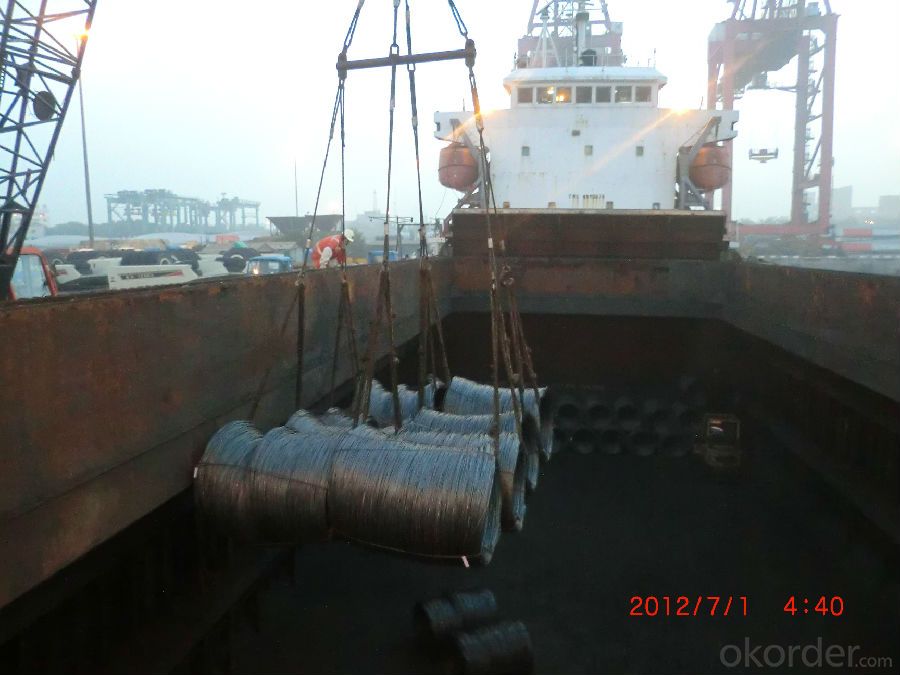
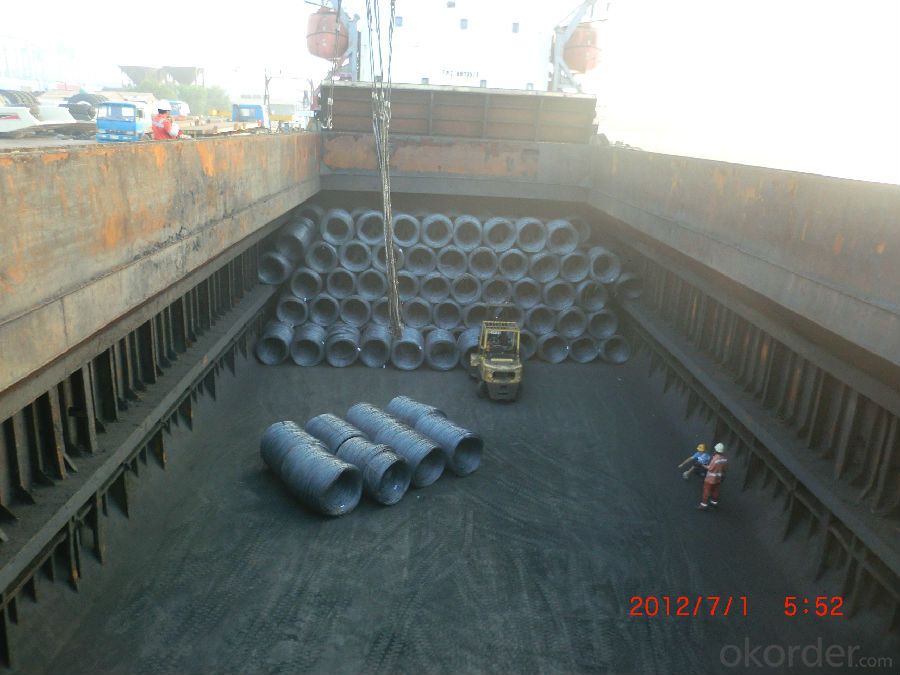
- Q: Can steel wire rod be used in the production of fasteners?
- Yes, steel wire rod can be used in the production of fasteners. Steel wire rod is a versatile material that can be used to manufacture a wide range of fasteners including screws, bolts, nuts, and rivets. It has excellent strength and durability properties, making it suitable for various applications where fasteners are required. Steel wire rod can be easily formed, threaded, and shaped to create fasteners of different sizes and configurations. Additionally, steel wire rod can be heat-treated and surface-treated to enhance its corrosion resistance and mechanical properties, further increasing its suitability for fastener production.
- Q: What are the common industry certifications for steel wire rod professionals?
- Some common industry certifications for steel wire rod professionals include Certified Steel Wire Rod Specialist (CSWRS), Certified Steel Wire Rod Technician (CSWRT), and Certified Steel Wire Rod Inspector (CSWRI). These certifications demonstrate an individual's knowledge and expertise in various aspects of steel wire rod production, quality control, and inspection.
- Q: How is steel wire rod used in the production of wire sculptures?
- Steel wire rod is used as the primary material for creating wire sculptures. Artists use it to form the structural framework of the sculpture, shaping and bending it into desired shapes and forms. The flexibility and strength of steel wire rod allow artists to create intricate and detailed sculptures with ease. Additionally, it can be easily welded or soldered to other wire rods to create more complex sculptures.
- Q: What are the different types of steel wire rod surface cleaning methods?
- There are several different types of steel wire rod surface cleaning methods, including mechanical cleaning, chemical cleaning, and thermal cleaning. Mechanical cleaning involves the use of abrasive materials or equipment, such as wire brushes or sandblasting, to physically remove dirt, rust, or other contaminants from the surface of the wire rod. Chemical cleaning utilizes various chemical solutions or solvents to dissolve or remove impurities from the surface. Thermal cleaning involves subjecting the wire rod to high temperatures to burn off any organic substances or coatings. Each method has its own advantages and is chosen based on the specific requirements and condition of the wire rod.
- Q: How is steel wire rod used in the manufacturing of wire mesh gabions?
- Steel wire rod is the primary raw material used in the manufacturing of wire mesh gabions. It is first drawn into various diameters and then woven or welded to create the mesh structure of the gabions. This steel wire rod provides the necessary strength and durability to withstand heavy loads and erosion. Additionally, it ensures the stability and longevity of the gabions, making them suitable for various applications such as retaining walls, erosion control, and landscaping projects.
- Q: How is steel wire rod used in the manufacturing of suspension cables for bridges?
- Steel wire rod is an essential component in the manufacturing of suspension cables for bridges due to its high strength and durability. Suspension cables are responsible for supporting the weight of the bridge deck and transferring the load to the bridge towers or anchorages. In the manufacturing process, steel wire rods are first subjected to a series of heat treatments to enhance their mechanical properties. This includes processes like annealing, which softens the steel and makes it more malleable, and quenching and tempering, which increases its strength and toughness. These treatments ensure that the wire rods can withstand the high tension and stress that suspension cables are exposed to. Once the wire rods are properly treated, they are further processed into wire strands by twisting several wire rods together. These wire strands are then tightly wrapped around a central core, forming the main body of the suspension cables. The number of wire strands and their arrangement may vary depending on the design and load requirements of the bridge. The use of steel wire rod in suspension cables offers numerous advantages. Its high tensile strength allows the cables to resist the substantial forces exerted on the bridge, such as the weight of the deck, live loads, wind loads, and seismic forces. The durability of steel wire rod ensures that the suspension cables can last for decades without significant degradation, providing long-term structural integrity to the bridge. Moreover, steel wire rod is highly resistant to corrosion, making it suitable for outdoor applications, even in harsh environments. This corrosion resistance is crucial for suspension cables, as they are constantly exposed to environmental factors such as moisture, humidity, and temperature fluctuations. By using steel wire rod, the risk of deterioration and failure due to corrosion is significantly reduced, ensuring the safety and longevity of the bridge. In conclusion, steel wire rod plays a vital role in the manufacturing of suspension cables for bridges. Its strength, durability, and corrosion resistance make it an ideal material for withstanding the high tension and stress exerted on the cables. By using steel wire rod, suspension cables can provide the necessary support to bridges, ensuring their structural integrity and safety for years to come.
- Q: How is steel wire rod used in the manufacturing of cold heading quality wire?
- Steel wire rod is used in the manufacturing of cold heading quality wire as it serves as the primary raw material. The wire rod is first drawn down to the desired diameter and then undergoes a cold heading process, where it is formed into specific shapes or fasteners such as bolts, screws, or rivets. The high quality of the steel wire rod ensures the strength, durability, and structural integrity of the final cold heading product.
- Q: What are the common production processes for aluminum-coated steel wire rod?
- The common production processes for aluminum-coated steel wire rod include cleaning the steel wire rod, applying a layer of aluminum onto the surface through electroplating or hot-dipping, and then cooling and solidifying the aluminum coating. This is typically followed by further processing steps such as drawing, annealing, and coiling to achieve the desired final product.
- Q: What are the different types of steel wire rod surface cleaning chemicals?
- There are several types of steel wire rod surface cleaning chemicals available, including acid-based cleaners, alkaline cleaners, solvent-based cleaners, and detergent-based cleaners. Each type of chemical is designed to remove different types of contaminants and provide specific cleaning benefits.
- Q: How are steel wire rods used in the production of wire ropes for cranes?
- Steel wire rods are a crucial component in the production of wire ropes for cranes. These rods serve as the raw material for the wire rope manufacturing process. To begin with, the steel wire rods are carefully selected based on their mechanical properties, such as strength and durability. The rods go through a series of processes, including cleaning, heating, and drawing, to convert them into wire strands. Once the wire strands are formed, they are wound together to create the wire rope. This process involves twisting multiple strands around a central core, usually made of fiber or steel. The wire strands are arranged in a helical pattern, which enhances the strength and flexibility of the wire rope. The steel wire rods used in the production of wire ropes for cranes are specifically chosen for their high tensile strength. This ensures that the wire ropes have the ability to withstand heavy loads and extreme working conditions. The strength of the steel wire rods directly impacts the overall strength and safety of the wire ropes. Additionally, the steel wire rods undergo various quality control measures during the manufacturing process to ensure their reliability and consistency. These measures include testing for tensile strength, breaking load, and other performance parameters. Once the wire ropes are manufactured using the steel wire rods, they are then used in cranes for a variety of applications. Wire ropes are essential for lifting and moving heavy loads, providing stability and control during crane operations. They play a vital role in safely and efficiently lifting, lowering, and suspending loads in various construction, industrial, and maritime settings. Overall, steel wire rods are integral to the production of wire ropes for cranes, as they provide the necessary strength, durability, and reliability required in demanding working environments.
Send your message to us
Low Carbon Hot Rolled Steel Wire Rod in Coil
- Loading Port:
- China main port
- Payment Terms:
- TT OR LC
- Min Order Qty:
- 100 m.t.
- Supply Capability:
- 10000 m.t./month
OKorder Service Pledge
OKorder Financial Service
Similar products
Hot products
Hot Searches
Related keywords
